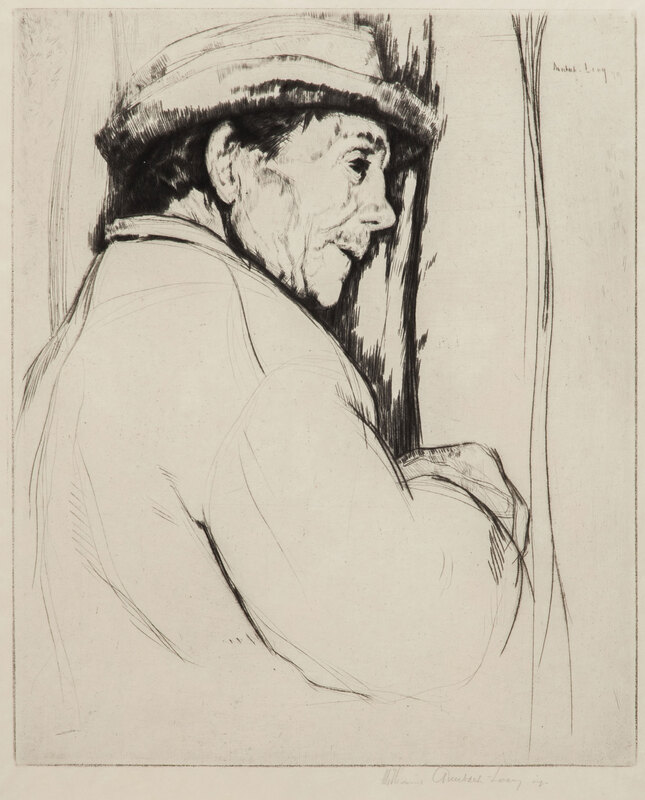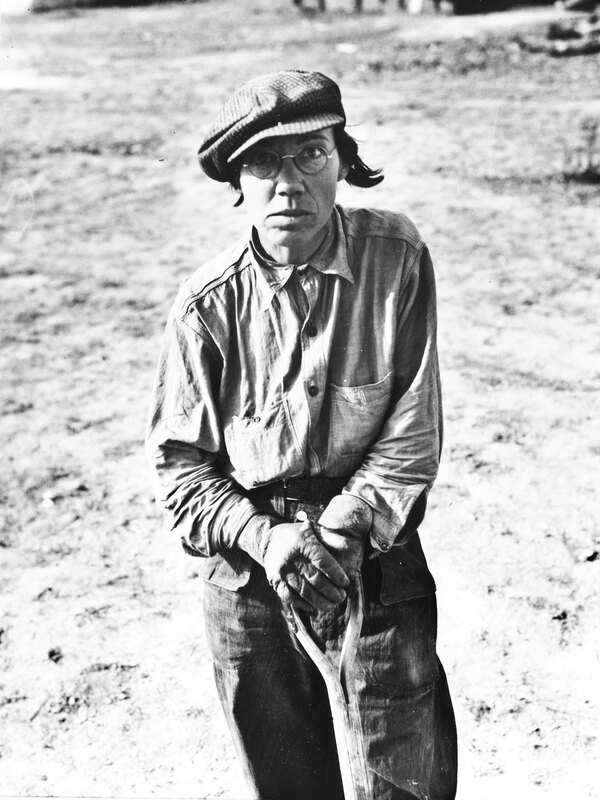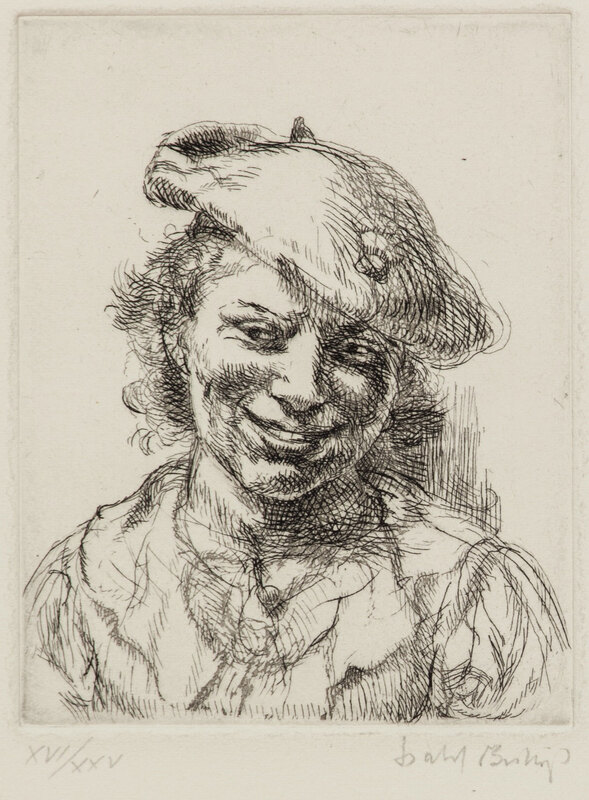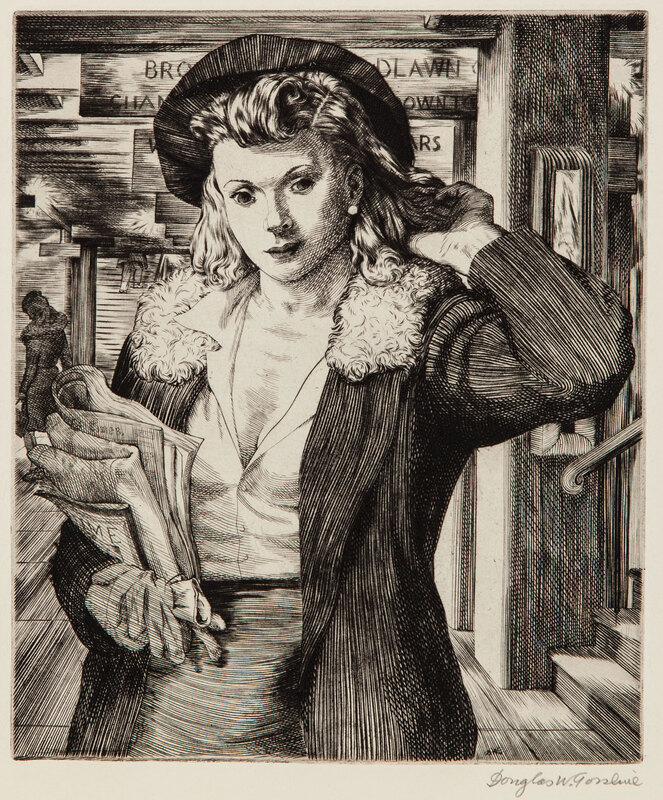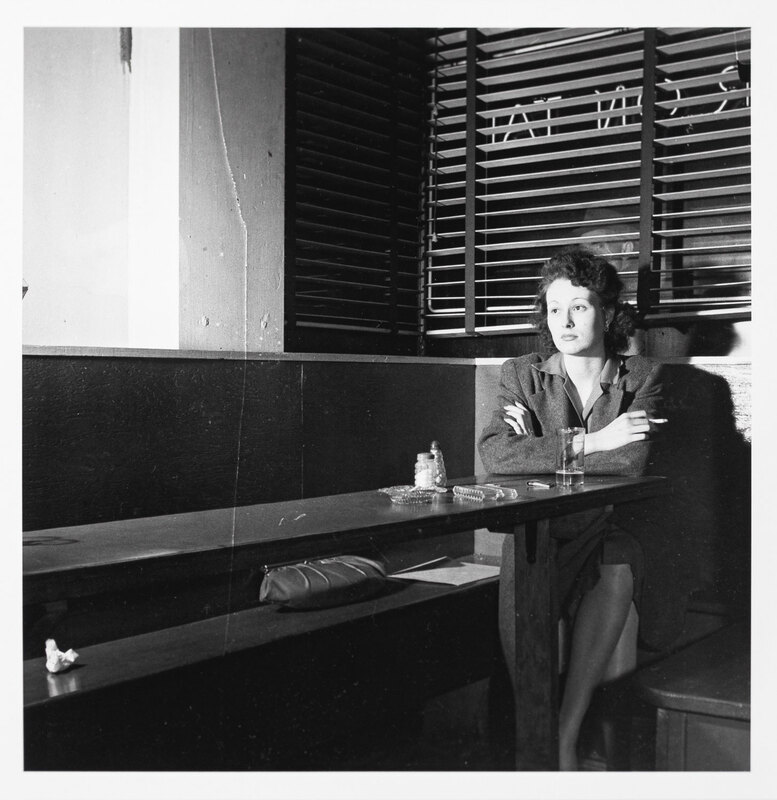Everyday Americans
With the collapse of the American economy, artists increasingly depicted ordinary folks with the same careful sense of individuality that had been shown in portraits of the elite. While images of working women and people of color lagged behind those of white men, a wider presence of the average individual was seen in artwork created to support the New Deal and later, the Second World War.
We typically associate portrait paintings and sculptures—artistic descriptions of an individual, generally focusing on the features of their face—with the moneyed and powerful. In the history of Western art, it has most often been reserved for those at the summit of the social and economic hierarchy; everyday people, those not possessing significant wealth or privilege, were consigned to what was called “genre” painting, which depicted them as little more than social types who did not need to be individuated. This distinction always sat uneasily with the more egalitarian aspirations of American democratic society, which recognized the dignity of the “common man”—a category that, however, long excluded women and people of color, among other marginalized subjects. American portraits can thus be seen as alternating between a traditional, hierarchical understanding and a countervailing drive to acknowledge the worth of all individuals, regardless of social position.
The 1920s was a period of growing income inequality, a decade that “roared” for those lucky enough to benefit from a booming stock market but left many more in the working class lagging behind. The collapse of the market in 1929 led many American artists to critically reevaluate a culture that had fostered such inequality. This new critical lens entailed a shift in the depiction of those workers—whether urban or rural, white-collar or blue—whose labor formed the basis of national prosperity. Everyday Americans would no longer be invisible, no longer relegated to anonymous types, but accorded that same specificity and individuality once reserved for those rich enough to commission a portrait. As one artist wrote in the 1930s: “The time has come when painters are returning to the life of the people once again and by so doing are absorbing the richness, the vitality and the lusty healthiness inherent in the people.”
This expansion of the democratic portrait had its limits, however, which reflected larger imperfections in the extension of American liberties to all citizens. While artists increasingly portrayed women as they entered the workforce, especially during the Second World War, they were less likely to depict people of color as full persons free of stereotype and caricature—although a growing body of African-American artists was transforming those biased visions. Nevertheless, federally funded efforts to unify as large a proportion of the population as possible around the New Deal and, later, the war effort, led to an unprecedented expansion in what we might call the portrait “franchise,” as artists found dignity in the faces of those previously deemed unworthy of elevation into art.
––TMD
Charles Keck (American, 1875 – 1951)
George F. Johnson, 1924
bronze; 19 x 10 ¼ x 9 ¼”
Roberson Museum and Science Center, 1976R10
gift of Charles F. Johnson Jr.
This bust is a fine example of the tradition of academic portraiture as it was practiced through the 1920s: realist in style, cast in an expensive material and commemorating a prominent personage. The sculptor, Charles Keck, was renowned for his statues and reliefs of important Americans, including presidents and military leaders. In 1923, he was commissioned to create a monument dedicated to George F. Johnson (American, 1857 – 1948), founder and president of the Endicott-Johnson Shoe Corporation, a major shoe manufacturing firm in New York’s Southern Tier that embraced an approach to labor-management relations known as “welfare capitalism.” In this model, also called paternalism, employers provided benefits beyond the wage for their employees—Johnson called this the “square deal,” which included favorable home financing, profit-sharing and numerous local amenities—in return for social peace.
Keck’s bust was made at the same time he was modeling the George F. Johnson Monument (1923) in Recreation Park on Binghamton’s West Side, a grandiose testament from “an appreciative community” to “the nobility of his character and his great benefaction to the people,” as one reads on the sculptural group’s base.
––TMD
William Auerbach-Levy (American, 1889 – 1964)
Happy, 1919
etching and drypoint; 14 ¾ x 11 ¼”
Binghamton University Art Museum, 2016.4.69
gift of Gil and Deborah Williams
Interpretive text has not been prepared for this object.
Dorothea Lange (American, 1895 – 1965)
Native of Indiana in a migratory labor contractor’s camp, near Calipatria, California, February 1937, printed 1988
gelatin silver print; 10 x 8”
Binghamton University Art Museum, 1988.41
purchase with funds from Mr. and Mrs. Morton B. Harris
A bespectacled woman dressed in rough, ill-fitting worker’s clothes looks forthrightly into the camera lens as she leans on a shovel clutched in her gloved hands. The photographer captures her from a slightly elevated angle so that the barren ground fills the picture frame and our attention is focused entirely on her. The caption identifies this unnamed woman as an Indiana native who has ended up in an emergency camp established for migrant pea harvesters by the Farm Security Administration (FSA) in the small agricultural town of Calipatria, located in southern California about 150 miles west of San Diego. She described her difficult circumstances with the words “It’s root hog or die for us folks.”
Dorothea Lange was one of several renowned photographers employed by the FSA to document rural and urban conditions across the United States during the Great Depression. Traveling extensively for this federal organization from 1935 to 1939, she photographed people in the context of their daily lives and struggles.
––TMD
Isabel Bishop (American, 1902 – 1988)
Laughing Girl, 1936
etching; 13 ¼ x 10”
Binghamton University Art Museum, 2016.4.56
gift of Gil and Deborah Williams
In this print, we view a girl with a sidelong glance and a wide grin, her curly hair peeking out from underneath her slouch hat. Perhaps it is that hat, or the subject’s broad features, or perhaps Isabel Bishop’s accomplished use of crosshatching in this etching, that puts one in mind of Dutch art, and particularly the character studies of Rembrandt van Rijn (Dutch, 1606 – 1669). Like many of the great artists of seventeenth-century Holland, Bishop sought to capture the visages of her fellow citizens, as she observed them from her studio perch on Union Square in Manhattan. In that neighborhood, she could see a cross-section of the rich diversity of New York types, the everyday working-class denizens of the metropolis.
Bishop was the lone female member of what was known as the Fourteenth Street School, a group of realist painters working around Union Square, many of whom had studied at the Art Students League with Kenneth Hayes Miller, who encouraged them to find inspiration in contemporary urban life.
––TMD
Isabel Bishop (American, 1902 – 1988)
A Youth, 1928
etching; 13 ¼ x 10”
Binghamton University Art Museum, 2016.4.54
gift of Gil and Deborah Williams
Interpretive text has not been prepared for this object.
Douglas W. Gorsline (American, 1913 – 1985)
Brooklyn Local, 1945
engraving; 11 x 10”
Binghamton University Art Museum, 2016.4.118
gift of Gil and Deborah Williams
A comely young woman glances out at us as she waits for a subway in lower Manhattan, at the City Hall stop of what was then the IRT line, to take her home to Brooklyn. It is the end of her work day and she has allowed her coat to hang open, revealing her shapely figure, but the newspapers and newsmagazine she clutches in her left hand leave little doubt that she is also an independent, intelligent citizen of the big city. Made in 1945—the year the Second World War ended—this engraving speaks to the tremendous transformations in women’s public roles during the war years.
Douglas W. Gorsline, a native of Rochester, made this print for the Associated American Artists, most likely using his wife, Elisabeth née Perkins (American, 1914 – 1974), as his model, as he frequently did in his highly regarded urban scenes. Like Isabel Bishop, he had studied under Kenneth Hayes Miller at the Art Students League.
––TMD
Esther Bubley (American, 1921 – 1998)
Girl Sitting Alone in the ‘Sea Grill,’ a Bar and Restaurant, Waiting for a Pick-up, Washington, D.C., April 1943, printed 1988
gelatin silver print; 8 x 10”
Binghamton University Art Museum, 1988.45
purchase with funds from Mr. and Mrs. Morton B. Harris
Interpretive text has not been prepared for this object.

